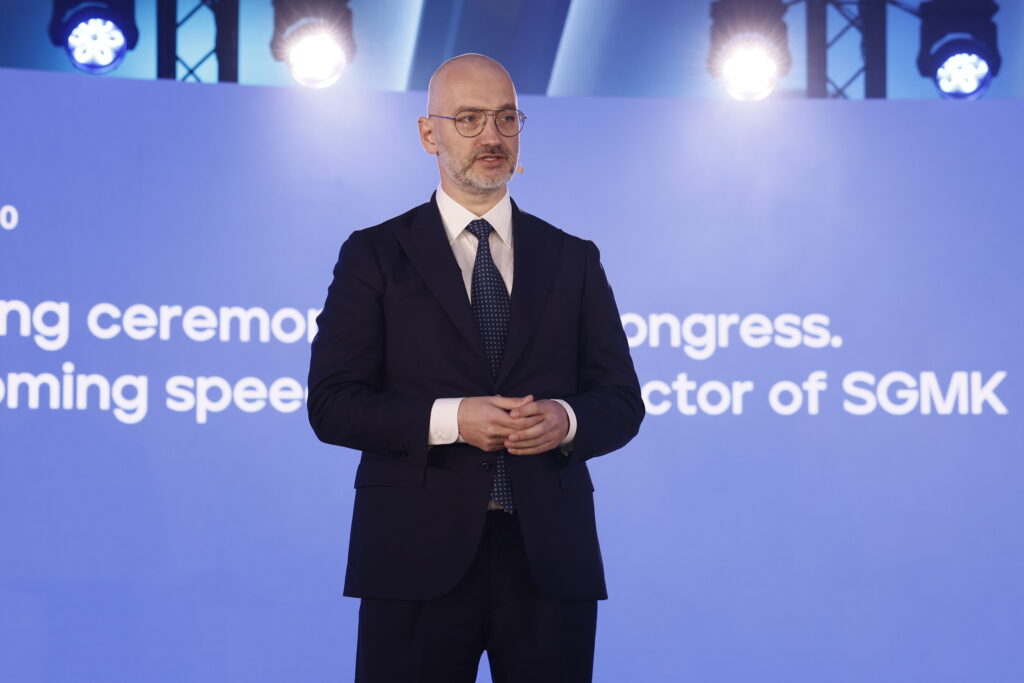On April 9th, 2024, during the opening ceremony of the Futurist of The Year science congress, Rector of the Nicolaus Copernicus Superior School announced an initiative to equip the university with a supercomputer, while launching an initial public consultation on the matter. This is excellent news for all academics, on a day of the ongoing celebration of science and technology at the university.

“I would like to inform, that we have just announced a public consultation on our website; we intend to purchase a superfast computer and create a state-of-the-art computer lab that will be soon available to students, doctoral students and researchers at our university. I think this news fits very well with the congress program, since the first day is devoted specifically to modern technology and modern technological trends. Tomorrow will be all about banking, and the third day of the congress will focus on the future of education. On that day, we will present a lot of interesting information about the new educational offer of the Nicolaus Copernicus Superior School. But today, I really wanted to announce this particular matter concerning our plans for development, because it shows our commitment to meet the expectations of our Colleges in terms of access to computing power and artificial intelligence.” – said Dr. Piotr Turek, Rector of the Nicolaus Copernicus Superior School during the opening ceremony.
The Nicolaus Copernicus Superior School is expanding its offer for researchers in the area of innovation and research support, and announces the launch of a wide-ranging preliminary consultation on the planned delivery, installation and configuration of a supercomputer along with equipping of a state-of-the-art computer lab for the SGMK Colleges.
This initiative is particularly important for supporting cutting-edge research projects in the fields of astronomy, life sciences, economics, medicine, or the application of artificial intelligence (AI) to research in many scientific fields, including the humanities.
Nicolaus Copernicus Superior School is committed to finding solutions that meet the challenges of the modern world. The investment in the supercomputer is a step forward in strengthening our university’s position as an academic center offering its researchers and students access to the latest technologies.
SGMK’s supercomputer will become an integral part of the national computing resources of the Polish academic centers and will be used in the scientists’ research projects at the Nicolaus Copernicus Superior School, as well as research projects co-implemented with partners from other science centers in Poland and abroad. In accordance with the university’s strategy, we are planning to extend an offer of cooperation to the most important science centers in the world, including extensive cooperation on coordinated nationwide research projects in the field of processing and analysis of huge amounts of data with the help of computing power available in Poland.
Consultation on the purchase of the supercomputer will be conducted with broad consideration of the opinions of the academic community, technology experts and institutional partners from across Poland, to ensure that the investment will serve broadly both Polish science and society.
All representatives of the scientific world interested in cooperating on this venture are cordially invited to participate in the consultation.
Supercomputers in Poland
Kraken
Kraken, a supercomputer launched in 2023, is a part of the TASK Computing Center of the Gdansk University of Technology. Its planned computing power at the end of 2023 was to reach 13.6 PFlops, which would most likely put it among the top 100 most powerful supercomputers in the world in the TOP500 ranking, and make it the fastest supercomputer in Poland.
Athena
Athena is the fastest supercomputer in Poland up to date (apart from the newly launched Kraken, which is likely to reach twice the Athena’s computing power). Athena ranked 155th on the TOP500 list in November 2023 with a theoretical value of 7.71 PFlops, and obtained 5.05 PFlops in the tests. Launched in 2021 by the Academic Computer Center Cyfronet AGH, it has a configuration of 48 servers with AMD EPYC processors and 1 TB of RAM (a total of 6144 CPU computing cores) and 384 NVIDIA A100 GPGPU cards.9 It is used in various simulations, as well as AI issues and research in science fields such as physics, chemistry, biology and medicine.
Altair
Altair is a supercomputer located at the Poznan Supercomputing and Networking Center, affiliated with the Institute of Bioorganic Chemistry of the Polish Academy of Sciences. Altair achieved a measured computing power of 3.53 PFlops and a theoretical power of 5.88 PFLops. According to the ranking list information, the supercomputer has 63,360 cores. It has a Xeon Platinum 8268 24C 2.9GHz model processor with Intel Cascade lake technology, and the operating system used is Cent
Helios
Helios is a supercomputer of the Academic Computer Center Cyfronet AGH. The measured Rmax value for Helios was 2.89 PFlops, and the theoretical value was 3.58 PFlops. The machine uses AMD Zen-4 (Genoa) generation processors and runs a Linux family operating system called HPE Cray OS. Helios was created as a part of work on the National Supercomputing Infrastructure for EuroHPC – EuroHPC PL project coordinated by Cyfronet. It was custom-designed by Hewlett-Packard Enterprise based on the HPE Cray EX4000 platform. Helios will be available not only to the scientists – in the first half of 2024 after installation and testing – but also to public administration. It is intended to support the development and introduction of new technologies to the market.
Ares
Ares is a supercomputer at the Academic Computer Center Cyfronet AGH. It is made up of computing servers with Intel processors (Xeon Platinum model), divided into three groups: 532 servers, each with 192 GB of RAM, 256 servers, each with 384 GB of RAM, and 9 servers, each with 8 NVIDIA Tesla V100 cards. Ares has a measured Rmax of 2.34 PFlops and a theoretical Rpeak of 3.51 PFlops. As of 2021, it appears on the Top500 list.




